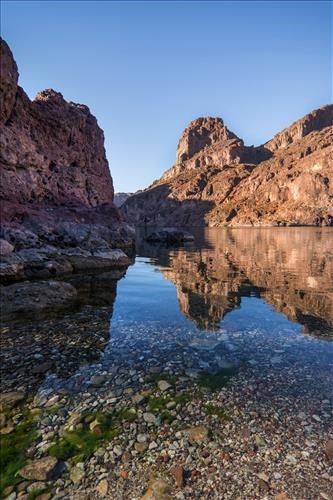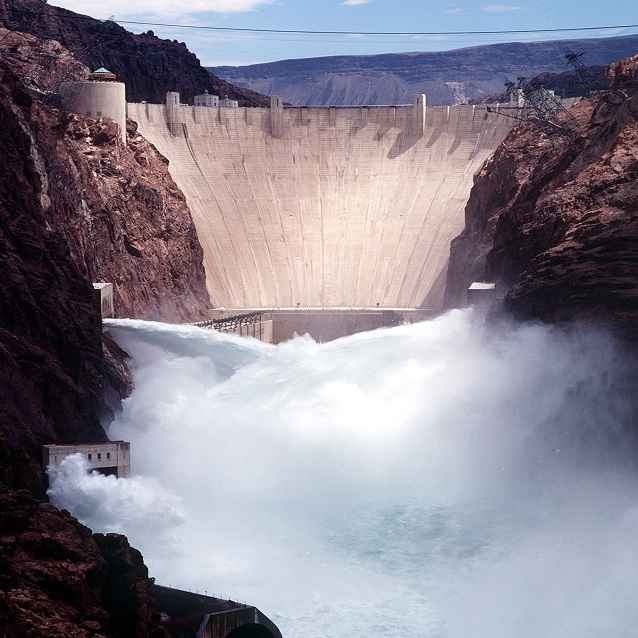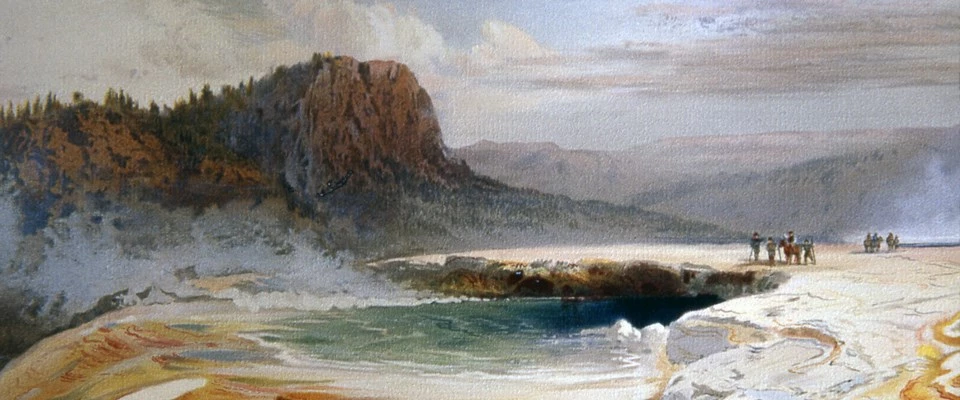
NPS Photo How Much Water is Found in NPS Units?Over 150,000 miles of rivers and streams flow through national parks and over 4 million acres of water bodies like lakes, reservoirs, and oceans can be found within park boundaries. However, ensuring an ample supply of water for all uses can be a challenge for state and federal agencies. Is There Enough?During prolonged periods of high temperatures and low precipitation, evaporation from reservoirs can substantially lower water levels. For example, Lake Mead National Recreation Area surrounds a large reservoir on the Colorado River that stores water for irrigation, hydropower and municipal water delivery uses. Over the years, Lake Mead has lost a significant amount of water due to drought and a warming climate. Measuring water levels helps us determine trends that can affect parks over time. Scientists predict that current use coupled with a dryer climate could cause the lake to potentially lose up to 12 vertical feet of water annually! Although many parks do not control the operation of dams, they can adjust the management techniques of water-based recreational activities ( like boating and fishing) for parks based on water availability.

Bureau of Reclamation Dams and ReservoirsHistorically, humans have tried to control the way water flows and how much water flows, through water engineering. Especially in the western United States, where water is naturally more scarce than that in the east; dams, hydroelectric power plants, and irrigation have transformed the way water flows and how it's used. Several National Park units surround these historic projects. The western U.S. relies heavily on these projects for water supplies and electricity, but typically dams have a negative effect on the downstream environment. For example, the Elwha Dam in Olympic National Park was removed because of it's negative impact on fish species and river habitat. After the dam was removed, the river was restored to its natural condition to improve fish passage. Scientists continue to research the effects of dams on riparian ecosystems, and national parks offer an ideal place to monitor those impacts. Water LawHumans manage Earth’s water in many ways. We monitor and manage both the amount of water and the quality of the water. Water rights are laws that tell us who gets to use the water and how much they get to use. Water law also helps us protect water to keep it clean and safe, like the Clean Water Act.Not every park has or needs a water right, but parks with water-dependent resources and parks that provide water for visitors and staff may need a water right. Different types of water rights are needed for different purposes. For example, some water rights are secured to ensure that water is available in parks for human consumptive uses while other water rights protect the availability of water for ecosystems and recreational activities. The National Park Service works with state water administrators to obtain and use water for parks. Water rights are just one of the tools the park service uses to protect water. Learn more about the NPS Water Rights Branch. 
NPS Image/ Thomas Moran, YELL 29 |
Last updated: December 19, 2018
